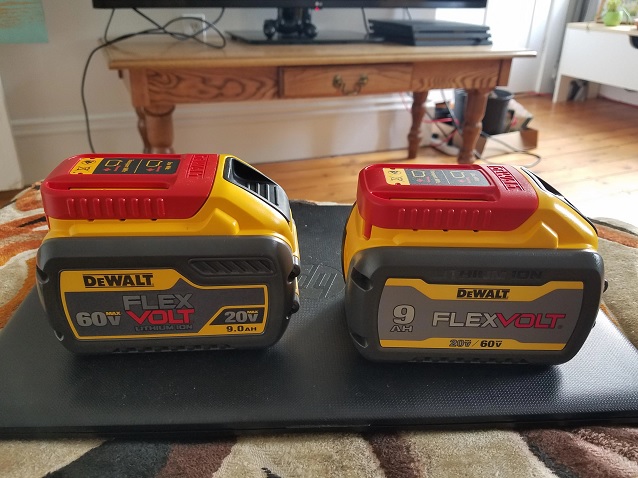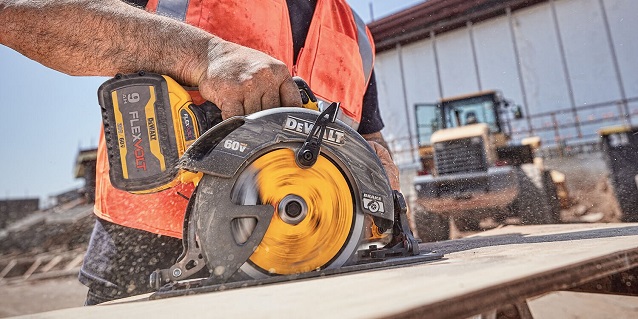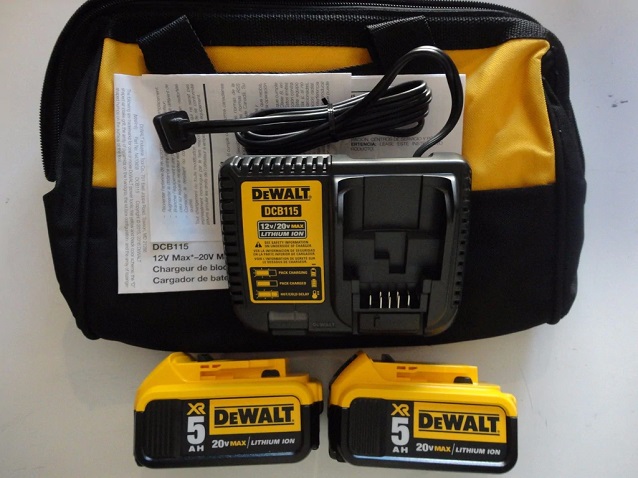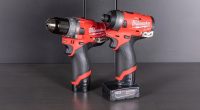Everything You Need to Know about DeWalt Batteries: Get More Power and Runtime from Your Tools
Improvements in battery technology have made their way into all devices and equipment. For cordless tools, this means more power, longer run times, increased battery life, faster charging, and more safety. This, coupled with advancements in brushless motors, has made cordless tools the go-to choice for any job.
Tool manufacturers were the first to shift their entire product lineup away from cords. Even those tools that run on a lot of bite, like hammer drills and circular saws, are now powered by batteries. Tool makers, like DeWalt, Bosch, Makita, and Milwaukee, have put a lot of R&D into developing different battery lines to feed the power requirements of their tools.
And since customer expectations are high, these batteries need to perform at optimal levels, equalling and even exceeding corded counterparts. Of course, not all tools need the same output for the same time. Some need to work for extended periods at normal settings, while others need more grunt for shorter periods. Working conditions, and the materials you’re working on are also a factor. If your toolbox consists of DeWalt tools, then you’ll need the right DeWalt battery for the tool.
DeWalt Batteries

Most DeWalt tools work with a Lithium-Ion (Li-ion) battery. These are the standard that you’d find not only in power cordless tools, but also in less demanding, everyday devices like phones and laptops. The benefit of Li-Ion batteries is their high overall capacity, greater efficiency and that they need little maintenance. They can be discharged to lower levels, meaning longer run times, without physically damaging the battery.
Older and less powerful tools run on the 12 V DeWalt battery, and this will be clearly marked on the tool itself. The majority of DeWalt tools use 18/20V batteries either in normal, or what DeWalt calls XR, or extreme runtime. For more demanding tools, there is the XR FlexVolt battery range which detects the nominal voltage requirements of the tools and adjusts the voltage according to use. These batteries can run at 54/60V in compatible DeWalt tools, or decrease the voltage down to 18V (again in 18V tools), but offer significantly longer run times.
Explaining the Differences in Dewalt Batteries
Voltage – Power
Voltage can be defined as the pressure that pushes electricity. In laymen terms, it is the available power. DeWalt batteries in higher voltage therefore can be regarded as more powerful than those with less voltage. Or the 18V XR line of DeWalt batteries will provide more power to the same tool than a 12V standard battery. The same can be said of the FlexVolt battery able to run at 54V, when we compare this to the standard 18V MAX battery line.
Ampere Hours – Battery Capacity – Run Time

To define Ampere hours, first let’s see what Amperes are. Ampere, or amps for short, denote electrical current. This is the flow of power from one point to another. Or put simply, this is the electrical charge in the battery. How long that electrical charge is available is given in Ampere hours, or Ah. This equates to run time.
DeWalt batteries come with various run times. Tools that will see less use can be powered by batteries in lower Ah ratings. Two Ah will offer enough run time for DeWalt orbital sanders or drills used in occasional home repairs. For every day and heavy use at the construction site or workshop, you’ll need DeWalt batteries in 5 or 6 Ah. Batteries with the longest runtime top out at 9 Ah. Battery capacity along with the voltage is clearly marked on the battery.
Run times also depend on external factors, like heat, and the type of motor in the tool. Higher outside temperatures, as well as batteries that are getting hot will see run times reduced. In addition, brushless motors feature in most of the long list of DeWalt tools. The same battery, with the same voltage and ampere hour rating will last longer in tools with brushless motors.
DeWalt includes standard MAX batteries and its XR range. While the former type is more than what you’ll want at home, the XR range targets professionals. These have a higher cell count to extend run times and overall efficiency. Some also are charged faster than the standard MAX line of batteries. The benefit of the MAX batteries is that they come in as lighter, and slightly smaller, so if weight is more of concern than power and capacity, then these are the DeWalt batteries for you.
DeWalt Chargers and Charging

To get a DeWalt battery to last longer, regular charging is important. LED bars at the front of the battery inform users of the remaining charge. A depleted battery is left to cool to room temperature before it is put in a charger and charged overnight. Contrary to popular belief, leaving the battery in the charger, even when full, doesn’t pose a risk or potential damage.
There are two basic types of Dewalt chargers: standard and fast chargers. Fast chargers will charge a depleted battery in about half the time as standard chargers. There are different configurations of these two charger types. Single dock chargers are available for specific battery types.
There are also single dock chargers that can charge the entire range of the DeWalt batteries (past and present) with compatible adaptors. Dual chargers do as they say on the box – charge two batteries at once, and Multiport charging stations are ideal for large jobsites, since they can charge four batteries at once. They also accommodate different batteries, from standard 18V MAX to 18V/54V FlexVolt batteries.



